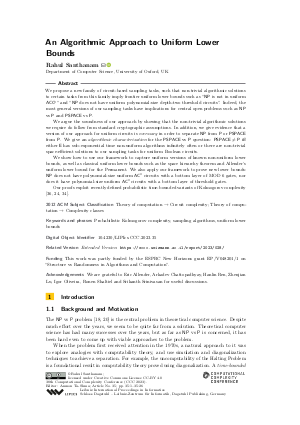LIPIcs.CCC.2023.35.pdf
- Filesize: 0.8 MB
- 26 pages

 Creative Commons Attribution 4.0 International license
Creative Commons Attribution 4.0 International license





























































Feedback for Dagstuhl Publishing